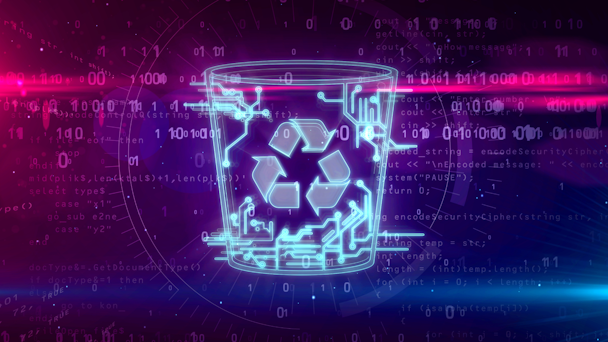The Internet is a massive polluter. Reducing data waste can help. Here’s how
The internet is a major polluter. At 2 percent of the total greenhouse gas emissions on Earth, it is on par with the aviation industry. As more brands and media companies start to consider their Environmental, Social, and Governance (ESG) strategy, it’s important to understand not only how we all contribute to the Internet’s emissions, but also what we can do to mitigate it.

The internet is basically one big electronic supply chain. Information is stored in data centers around the world, which travels across a variety of networks into another data center, or onto a computer screen. There is an emissions calculation for every hop in the supply chain, which include both the power required for internet to stay up and running, and the embedded emissions from the manufacturing, installation and end-of life handling of every cable, mast, server etc.
The incremental pollution for every gigabyte of data that moves through the internet can be estimated to one kilogram of CO2e. Every web page load, every ad impression and every video view contributes to increased emissions of greenhouse gases.
While our industry will likely get better at measuring exactly how much we’re polluting, one thing is for certain, the total amount of greenhouse emissions is about to explode. There are several factors that will contribute to a dramatic rise in the Internet’s contribution to pollution.
The predicted increase in online video advertising, which delivers a more engaging experience and performs well on video-centric social platforms popular with younger generations like TikTok and Instagram. Emarketer predicts a 20.1% increase in year-over-year spend on video advertising in 2022, and continued growth in the coming years. Video requires a high amount of data to be transferred at high speeds, significantly higher than display banners.
The mobile internet will increase compared to fixed internet. The mobile internet is a heavy data user, as people expect continuous high-quality connectivity on a device that needs to connect even as it’s moving around. Ericsson reported that from 2020 to 2021, mobile data usage grew by 46%, which they considered “normal.”
People have raised their expectations. They want to be able to experience clear, high-definition, real time video with no glitches anytime, anywhere. This requires higher power internet, more infrastructure, and more data.
As an industry, we can’t fight these trends, and we shouldn’t. Technical innovation is beneficial for many reasons. However, we can ensure that these trends don’t become overly detrimental to our environment with measures that reduce our emissions.
The most realistic options for reducing our footprint
People have come to accept that we’re addicted to the Internet. Many thought leaders in climate policy are starting to look at how to “build better,” realizing that people are hardly going to stop streaming the Office or using Google Maps on their drive in order to reduce their carbon footprint. Essentially, it’s on us to ensure that people can still have the experience they expect, but in a way that is less costly to the climate.
Some of the tech giants have been vocal about using green energy to power their data centers, and while this is a great start, it’s not a solution that alone will solve the industry's problems. There is a limited supply of carbon-neutral electricity in the world. And powering the data centers with clean energy does nothing to solve the embedded emissions related to the manufacturing, installation and end-of-life handling of the data centers. We need to make sure that no company is able to make this claim and consider the conversation over. We need to use every lever we have to reduce the greenhouse emissions of the Internet.
Another common conversation revolves around a better infrastructure, the idea that better technology can be more energy efficient. Increased efficiency of data processing and more intelligent data centers would definitely help and the energy cost per gigabyte of data is lower today than it ever has been. This is an incredibly important long-term element of our industry’s ability to reduce emissions. However the infrastructure efficiency is projected to progress about 13% per year, much lower than the 40% annual growth in data use that is expected, not to mention the emissions that we're already dealing with.
Another promising option that can be implemented more quickly is to reduce data waste. With the tools available today, our entire industry can be smarter about if and how we send data. Some companies may find that their waste happens within their data centers - perhaps using computing power to return search results. Here, data efficiency can be accomplished with smarter algorithms.
For data-heavy user experiences like video, it’s more about reducing the amount of data that is transferred. Not everything that is sent to a smartphone screen is necessary for a good user experience. For example, ads and content that are loaded out of view are data waste. Data for high-resolution images for screens that are unable to produce such a level of picture quality are data waste, too.
Every option for lowering Internet emissions is important to consider - a portfolio approach to emissions reduction is likely to be the most successful in the long term. But by using better strategies and tools to serve ads content today, we can immediately reduce the footprint of every ad and every page load without hurting user experience.
Gabrielle Persson is vice-president of products at SeenThis
